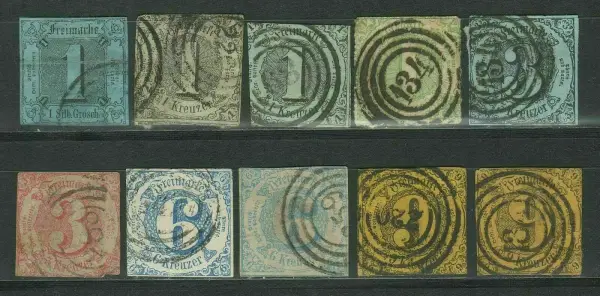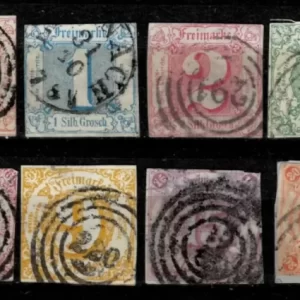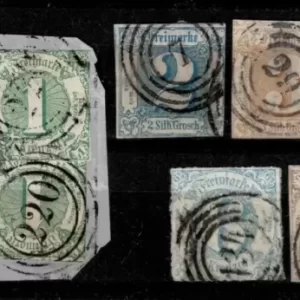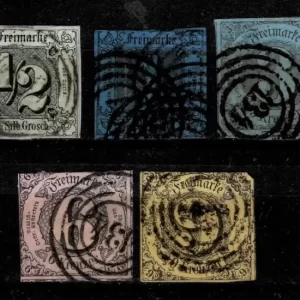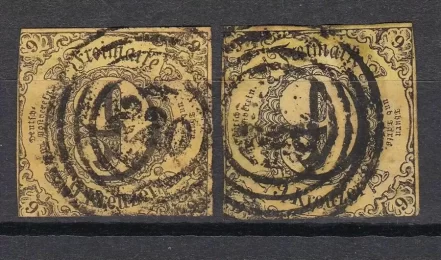Showing all 5 resultsSorted by latest
Showing all 5 resultsSorted by latest
Postage Stamps of Thurn and Taxis (1852-1867)
The House of Thurn and Taxis operated one of the first European postal systems and issued postage stamps from 1852 to 1867 before its postal service was absorbed by Prussia.
Background
- The Thurn and Taxis postal system dated back to the 16th century, operating postal routes across the Holy Roman Empire.
- After German postal reforms in the mid-19th century, Thurn and Taxis was granted the right to issue its own stamps in areas where it still controlled postal services.
- Stamps were issued for two different currency zones:
- Northern District (Silbergroschen currency, used in Prussian-controlled areas).
- Southern District (Kreuzer currency, used in southern German states).
1. First Thurn and Taxis Stamps (1852-1859)
- Issued on January 1, 1852, with separate stamps for the Northern and Southern districts.
- Design:
- Simple numeral design showing the denomination in the center.
- Ornate decorative frame with “Freimarke” (postage stamp) at the top.
- Printed in different colors for each denomination.
- Imperforate stamps (no perforations, had to be cut by hand).
2. Later Issues (1860-1866)
- 1860: New designs with similar numeral motifs but improved printing techniques.
- 1862: Introduction of perforated stamps.
- 1865: High-value stamps added for heavier mail.
3. End of Thurn and Taxis Stamps (1867)
- In 1867, after Prussia annexed several German states, the Thurn and Taxis postal service was dissolved.
- The postal system was integrated into the North German Confederation, which issued new stamps.
- Thurn and Taxis stamps were demonetized and replaced by North German stamps.
Collectibility & Value
- Early imperforate issues (1852-1859) are rare and valuable.
- Silbergroschen vs. Kreuzer series – collectors often seek both variations.
- Stamps with clear postmarks from smaller towns are highly desirable.

